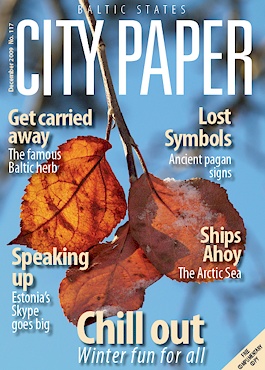Crossroads of the Nations, Kedainiai, a multicultural pearl in rural Lithuania
 Did
you hear the one about the Jew, the Arian and the Scot? No, this
isn't the start of a bad taste joke, but it puts the history of one
of Lithuania's most unusual towns in a nutshell.
Did
you hear the one about the Jew, the Arian and the Scot? No, this
isn't the start of a bad taste joke, but it puts the history of one
of Lithuania's most unusual towns in a nutshell.
Kedainiai, home to 32,000 people and located about 40 kilometers north of Kaunas, is a bit of a provincial backwater these days. But things weren't always like that – a few centuries ago it was an important center with amazing religious and ethnic diversity.
Originally a small village of fishermen and farmers, Kedainiai began expanding in the mid 15th century when several important trade routes crossed it and German merchants started visiting. The Grand Duchy of Lithuania, which at its peak was the largest state in Europe, was a place of remarkable religious tolerance for its time and many different groups lived side by side. So when the noble Radvilos family which ruled Kedainiai granted rights to freely enter and leave the town in 1627, many people from widely divergent communities moved there.
In 1629 a group of German Evangelical Lutherans moved in, followed in 1648 by a small community of Russian Orthodox. Catholics had been long established, but there was also a flock of Arian Christians. This splinter group which denied the Holy Trinity, existed in the town until 1658, when the Grand Duchy's parliament decided they were a bit beyond the pale and expelled them from the state. Perhaps even more remarkably, considerable numbers of Scots fleeing religious persecution in their homeland arrived in Kedainiai.
The town was governed by an elected body, and all the various groups had the right to serve on it, and the melting pot was a highly prosperous place. But this golden age was destined not to last, and from the mid 17th century a series of wars, plagues and fires saw its importance gradually diminish. Its complex ethnic mix changed, but it remained a lively place with a rich culture up to the 20th century. Polish poet and Nobel Prize Winner Czeslaw Milosz was born in the village of Å eteniai near Kedainiai in 1911, and later wrote about the region in his works.
But the group which arguably had the most lasting impact on the town was the Jews. First settling in the early 17th century, they engaged in a variety of professions from selling wine and vodka to developing the cucumber industry for which the region is still known in Lithuania today. Kedainiai was a center of Jewish intellectual life, and the famous Talmudic scholar Eliyahu, later called the Gaon of Vilnius, studied there. Jews played an active role in the governance of Kedainiai and at one time formed the backbone of its fire brigade.
On August 28, 1941, 2076 Jews of Kedainiai were murdered by the Nazis and local collaborators, destroying a community that had existed for four centuries. But there are still architectural reminders of what once was. Not to be missed is the complex of synagogues near the Old Market Square (Senoji Rinka). The smaller one houses a Multicultural Center where classical and jazz concerts, seminars and educational events are held.
Monuments of other faiths remain too. The wooden Baroque St. Joseph's Church (10 Radvilu Street) dates from 1766 when it was raised to serve the Carmelite community, but under the Soviets it was used as a warehouse. Re-consecrated in 1991, it has beautiful carvings inside and interesting Christian-themed sculptures in traditional Lithuanian style in the courtyard. The Museum of Kedainiai Region is in the former Carmelite Monastery (19 Didžioji Street).
Fine examples of secular architecture can be found at the Great Market Square (Didziosios Rinkos). Alongside the houses of merchants and glaziers is one of only three 17th century Renaissance town halls surviving in Lithuania.
That's just a small sample of what there is to discover. Definitely not to be missed is one of the oddest sights you will see in the Baltic countryside. A few kilometers outside of town stands a beautiful minaret. Perhaps a little disappointingly, it does not testify to the presence of an ancient Moslem community in Kedainiai. Rather, it was erected in about 1880 by the Russian General E. Totleben who at that time owned the town, probably as a memorial to successful battles against the Turks. However, there are rumors that he built it in honor of his mistress, so perhaps even old soldiers prefer to make love not war.
For more information about Kedainiai, see www.visitkedainiai.lt
By Philip Birzulis




